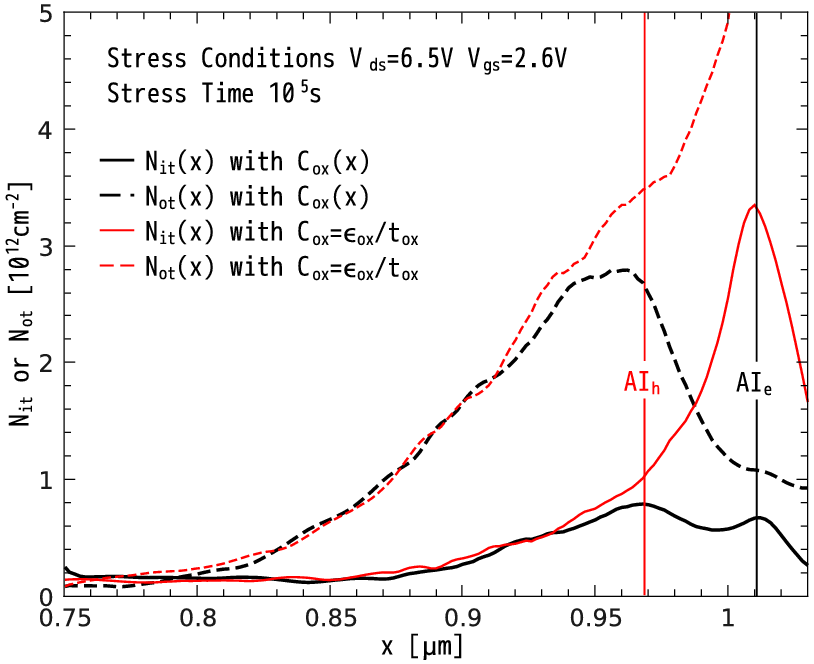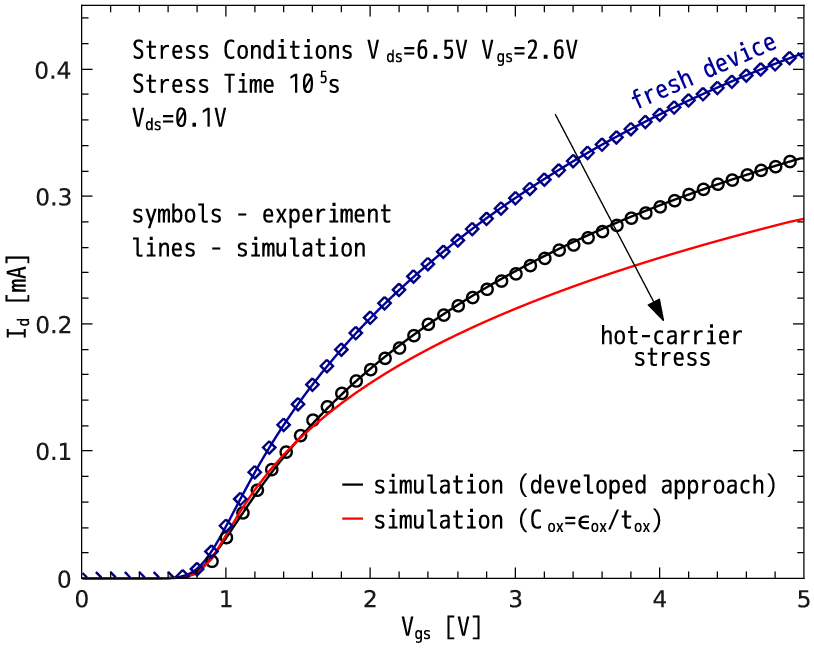Next: 4.3.3 Extraction Techniques Description Up: 4.3 Charge-Pumping Extraction Techniques Previous: 4.3.1 Local Oxide Capacitance
A comparison between the simulations and the developed analytical approach for the local capacitance profile is presented in Figure 4.13b. It can be concluded that the obtained results are in good agreement. At the same time, the expression Cox = εox/tox - even when corrected for tox = tox(x) (Figure 4.13a, inset) - leads to substantially different results. The value of Cox(x) has its maximum with Cox(= εox/tox) in the middle of the gate and decreases gradually toward a much lower value outside of the gate edge due to the fringing effect. As expected, the most pronounced peculiarity is observed at the drain side of the gate where the abrupt change in the oxide thickness occurs, Figure 4.13a, inset. As predicted by analysis of the conformal map one can see that under the gate electrode the fringing effect can be neglected for distances longer than 1.47tox(x = 1um) from the gate edge (this is reflected in Figure 4.13b). Note that an abrupt reduction in Cox(x) is not a physical phenomenon and such an approach should not be used.
To extract the density of interface and oxide traps an analytical Cox(x) profile is incorporated into the scheme described in [177]. The results obtained under different assumptions regarding the Cox(x) distribution for a stress time of 105s are presented in Figure 4.14a. The extracted Nit(x) and Not(x) profiles were subjected to further validation as input parameters to simulate the transfer characteristics of the degraded device employing MiniMOS-NT. A comparison of the simulated and experimental curves once again confirms the applicability of the developed model for local oxide capacitance (see Figure 4.14b). The role of the fringing effect at large stress times is self-evident. Therefore, further in our investigations the developed model for the local oxide capacitance is used for all considered characterization methods.
(a) (b)
(b)
|